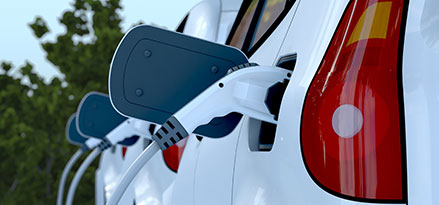By James Raia
The increase in hybrid vehicles has occurred for several reasons, but the interest in this technology is mostly due to pending federal regulation for improved gas mileage and additional environmental awareness among consumers. Under the new Environmental Protection Agency (EPA) and Department of Energy guidelines, U.S. auto fleet passenger cars must achieve an average of 54.5 mpg by 2025. Along with being more fuel efficient, hybrid, electric and other alternative-fuel vehicles can help reduce emissions.
J.D. Power & Associates reports that by 2025, more than one-third of passenger vehicles will be equipped with alternative powertrains and operated with alternative fuels. About 17.5 percent of the vehicles will be gas/electric hybrids and plug-in hybrids. Plug-in electric hybrids will comprise about a five percent share.
The history
Hybrid vehicles, which operate on a combination of gas and electric motors, debuted in the United States in 1999 with the subcompact Honda Insight. The Insight won numerous innovation awards and it achieved EPA averages of 61 mpg in city driving and 70 mpg on the highway.
The original Insight, which went out of production in 2006, was eventually overshadowed by the introduction of the 2000 Toyota Prius, a hybrid sedan. The Prius had already been successful in Japan for four years, and its momentum continued in the U.S. and prompted the current trend. Since the success of the Prius, every major and niche manufacturer has incorporated hybrid and alternative fuel vehicles into their lineups.
The hybrid compromise
Despite all the benefits, there are a couple trade-offs to hybrid technology. For car buyers seeking superior cargo space, hybrid engines require large battery packs that restrict trunk space. And although electric vehicle range has improved, many plug-in electric vehicles require frequent charging, resulting in drivers' hesitancy to embrace hybrid technology because of "range anxiety."
Different types of hybrids
When buying a hybrid car, it helps to have a basic knowledge of the options. Here are the main terms in the hybrid world:
- Hybrid electric vehicles (HEVs): In HEVs, the engine combines the use of gasoline and electricity to achieve improved gas mileage. The most common current technologies include regenerative braking, electric motor assist and automatic engine start and shutoff.
- Plug-in hybrid electric vehicles (PHEVs): Similar to the design of HEVs, this engine technology also combines the use of gasoline and electricity to achieve improved gas mileage. However, the main difference here is that owners of PHEVs can not only charge their car's battery by plugging into an outlet, but their car can also fully substitute electricity for gasoline, allowing them to drive for miles without using any gas at all.
- Battery electric vehicles (BEVs): BEVs are plug-in, battery-powered automobiles propelled by an electric motor. The engine derives power from lithium-ion batteries (Nissan Leaf) or battery packs (Tesla). The batteries are recharged via commercial or home charging units.
- Hydrogen vehicles: Hydrogen is used in an internal combustion engine or mixed with oxygen in a fuel cell to run electric motors.
- Biodiesel fuel vehicles: Renewable sources, such as vegetable oil from cooking or soybeans, animal fats or algae are used to operate a diesel engine.
- Alternative fuel vehicles: Cars that operate on fuels other than gasoline. In addition to hydrogen and biodiesel, other alternate fuels include non-fossil natural gas, bio-alcohol, non-fossil methane, ethanol and propane.
The hybrid for you
With so many choices out there, it may be hard to pick your first hybrid car. Just remember that, overall, these engine designs continue to get better. They're engineered to conserve energy, emit fewer greenhouse gases and allow you to stay out on the road longer. Plus, now you'll be prepared with a little more hybrid knowledge when you're making your next car purchase.

